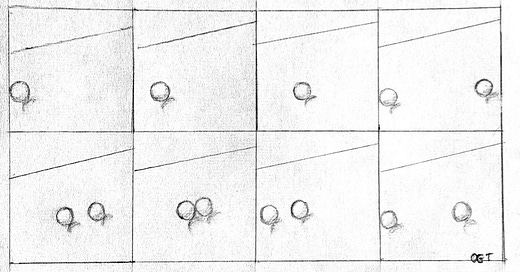Author’s Note: Below is the second chapter of my book, where I examine the history and meaning of the concept of causation. If you’re still catching up, here is the Preface, and here is Chapter 1.
Those who have seen the lectures in which I first developed this material may notice that my crude illustrations (to demonstrate David Hume’s view of causation) have been replaced with more polished ones by my youngest son. I’m going to try to get him to improve upon my illustrations for the next chapter, too.
As usual, please let me know about any typos you spot, and I welcome feedback on the philosophical content, its clarity, and anything you think I got wrong or missed or could have added. Reply in the comments field, or hit “reply” to this in your e-mail.
If you’re only getting the teaser for this post and want to get more, you know you can always subscribe to support this project and get everything as I write it.
Now here’s the chapter.
Chapter 2: The Natural History of a Billiard Ball
If causation is the central issue of Ayn Rand’s philosophy—and the central idea of her morality and the principle behind the spiritual discipline she offers as a guide to life—then we had better start by understanding what causation is.
We can approach the topic by looking at the history of ideas about causation—which, it turns out, is almost synonymous with the history of modern civilization itself.



